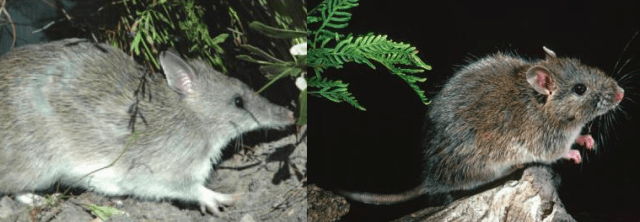Booderee National Park (BNP) is located on the southern peninsula of Jervis Bay, on the south coast of New South Wales. This reserve, declared under the Environment Protection and Biodiversity Conservation Act 1999, has as main goal to protect the environment with special attention to organisms that have national significance such as endangered species. Booderee is owned and jointly managed by the Wreck Bay Aboriginal Community and Parks Australia.
EFFECTS OF OVERBROWSING AFTER FIRE
Fire is a natural disturbance to vegetation influencing terrestrial ecosystems and is crucial to conserve biodiversity. After a wildfire the plants are in a germinating and regenerating stages and have not developed enough defences such as thick leafs and chemicals that tend to keep them protected from herbivores grazing and browsing. The increasing number of macropods have been causing several impacts on the vegetation by changing the landscape to highly simplified plants domination and reducing the hiding spots of small animals from predators.

Red-necked Wallaby and the eastern-grey Kangaroo are between the three species of macropods presents in BNP
Claire Foster´s PHD research program is testing the effects of fire and overbrowsing by kangaroos and wallabies on vegetation recovery after fire. Experimental areas have been fenced off to compare the plants and invertebrates responses to fire where macropods are totally excluded, partially excluded (allowed occasional access through gates) and constant high-intensity browsing.
Our field work aims to figure out how often wallabies and kangaroos visit a defined area/vegetation by counting scats providing an index of macropods browsing for future comparison. This time, we opened the gates of the fences of the partially closed areas to allow access by the macropods and the pellets will be future counted. The idea of looking for scats might be strange at first, but they provide really useful information about what sort of animals are visiting a certain area and can be used as an animal survey technique.
SMALL MAMMALS CONSERVATION
As I mentioned before the combination of vegetation change by overbrowsing and high number of predators are the biggest threat to small mammals present in BNP such as the bush-rat (Rattus fuscipes) and the longed-nosed bandicoot (Perameles nasuta). As potential shelter and hiding sites have been taken by fire and overbrowsing, animals became more vulnerable being critically important to reduce the number of predators and maintain other control programs such as cameras monitoring.
It is important to control the foxes by baiting them with poison. So, that is one of the activities that I had helped with. Many fox bait stations are spread all over the park. The baits are buried 15cm deep to make sure other diggers may not be able to access and the smell does not attract them.
Another way to maintain small mammals is to monitor their presence with camera traps. This was done by setting a camera in front of a feeding station or a bait. The bush-rat and the long-nosed bandicoot are given special attention by the park rangers as they are extremely vulnerable to predation and have an extraordinary ecological role. They eat and spread underground fruiting fungi known as native truffles that establish a symbiotic relationship with the vegetation transferring water and nutrients and helping to avoid diseases.
Camera traps have been also set up to monitor long-nosed potoroos which were recently translocated to the park.











Looks like you undertook some pretty interesting work! I’d be interested to know a bit more about the history and efficacy of fox baiting in the park – and its impacts on small mammal populations since program implementation. Is there a link between fox baiting and the overbrowsing that is now happening? Also, what are the implications of Claire’s work on overbrowsing and fire, for management at Booderee National Park?